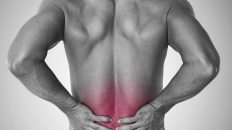Constipation makes life difficult for up to 16-17% of adults in Europe and one in five people over 65 [1]. The cost to hospitals of treating unplanned admissions due to constipation is, in the UK alone, a staggering £145 million in 2014-15. Despite this, 1 in 5 people feel embarrassed and don’t want to talk about it, even to their doctor [2].
Constipation – the most common causes
Paradoxically, the main causes of constipation are very simple to eliminate. All you have to do is want to.
Lack of fibre in the diet. – Dietary fibre accelerates the flow of metabolic products through the intestine.
Lack of fluids. – Fluids help to soften the stool and make it easier to pass.
Lack of exercise or reduced motility. – Activity helps stimulate the muscle contractions needed to maintain adequate movement of metabolic products [4].
Whether constipation is blamed on a sedentary lifestyle, an unhealthy diet, overuse of certain medications, illness, stress or a metabolism that slows down with age, it is important to get rid of the problem as soon as possible, as chronic constipation damages health.
Serious consequences of constipation
Many symptoms can occur as consequences of constipation. These include abdominal pain, increased weakness, decreased appetite, nausea, haemorrhoids, faecal incontinence, bloating and vomiting [3].
As a result of prolonged intoxication (due to lingering, putrefying faecal masses in the intestine), we may experience bloating and gas, problems with our complexion, bad breath, brittle nails or dull hair. We feel sluggish, weak, tired and have headaches [4].
How to treat constipation?
The best way to treat constipation will, of course, be natural methods. You should start by changing your eating habits. A diet rich in fibre [10], drinking at least two litres of water a day, regular meals, time to relax and, of course, exercise are essential [4, 6].
However, it happens that even when applying these recommendations, there is still no effect. What then?
Laxatives – a paradox
We often (and willingly) turn to laxatives. Advertisements on TV tempt us with an amazing effect, a feeling of relief, lightness and an immediate solution to the problem. But is it worth using them?
Laxatives are addictive to our gut, even though they may initially appear to be effective. Paradoxically, overuse, regular use of laxatives, can end in constipation [5].

Vibrotherapy can be effective
Vibrotherapy is an alternative treatment for constipation, research shows.
Prof Vassilios Papadopoulos of McGill University in Montreal has published a study using a device that produces an external force on the abdominal cavity to treat constipation. The study found that “external oscillatory motion (vibration), applied to the abdominal cavity, significantly improves the bowel movement rate and relieves constipation”. The results of the study confirm the significant effectiveness of vibration, where after 12 weeks of vibration application, there was a 211% increase in bowel movement rate and a 47% reduction in the total movement time of faecal masses in the colon [7].
The effectiveness of vibration was also noted in his study by Ta-Sen Wei, who stated in his conclusions that “external mechanical vibration, particularly on the abdomen, reduced the passage of faecal masses in the colon and therefore INCREASED bowel movement without any side effects.”[8]
Dr Ron Yishai, head of the department of Gastroenterology and Hepatology at the Tel Aviv Medical Centre, published a study in which he proved that ‘the use of mechanical vibration (vibration), mimicking the body’s natural physiology, effectively stimulates intestinal contractions, which improves bowel movements and facilitates bowel movement. In the study, Dr Ron Yishai also points out that vibrotherapy avoids the typical side-effects that occur as a result of medication [9].
Vibrotherapy for constipation
The results show that vibrotherapy has a positive effect on increasing bowel movement and is effective against constipation. Vibrotherapy is certainly a winner over other more invasive measures that burden the body. Read also our other interesting article – Does vibration training lose weight?
Complied from:
[1] NORGINE ILC (2013): The Burden of Constipation in our Ageing Population. Working Towards Better Solutions Executive Summary.
[2] Coloplast (2015): The Cost of Constipation Report.
[3] Erichsén E (2015) Constipation in palliative care: Prevalence, definitions, symptom distress and risk-factors. Linköping University, Studies in Health Sciences, Szwecja
[4] Thom M (2011) Constipation and Faecal Impaction: Information sheet. Alzheimer Scotland Action on Dementia
[5] Korbut R (2009) Leki przeczyszczające, Wydawnictwo Uniwersytetu Jagiellońskiego, Kraków 2007
[6] Müller-Lissner S (2009) The pathophysiology, diagnosis and treatment of constipation, Dtsch Arztebl, Int
[7] Mimidis K, Galinsky D, Rimon E et al. (2005) Use of a device that applies external kneading-like force on the abdomen for treatment of constipation. World Journal of Gastroenterology(13): 1971–1975
[8] Wu, T. J.; Wei, T. S.; Chou, Y-H; Yang C.-P. (2012): Whole-body vibration for functional constipation: a single-centre, single-blinded, randomized controlled trial. w: Colorectal Disease (14), s. 779–785.
[9] Ron, Y.; Halpern Z.; Safadi, R.; Dickman; Dekel, R.; Sperber, A. D. (2015): Safety and efficacy of the vibrating capsule, an innovative non-pharmacological treatment modality for chronic constipation. w: Neurogastroenterology and motility : the official journal of the European Gastrointestinal Motility Society 27 (1), s. 99–104.
[10] http://www.bieganski.com.pl/other/doc/2121/dietabogatoresztkowa.pdf




